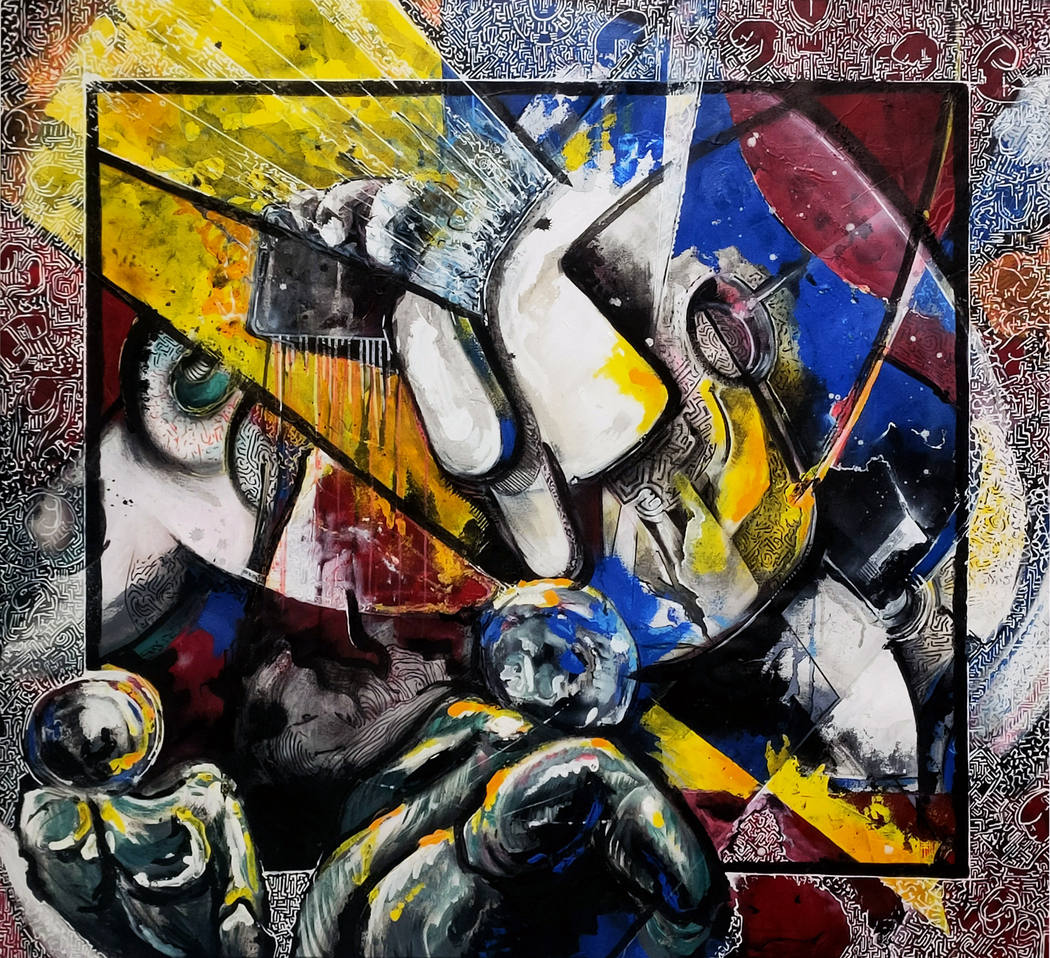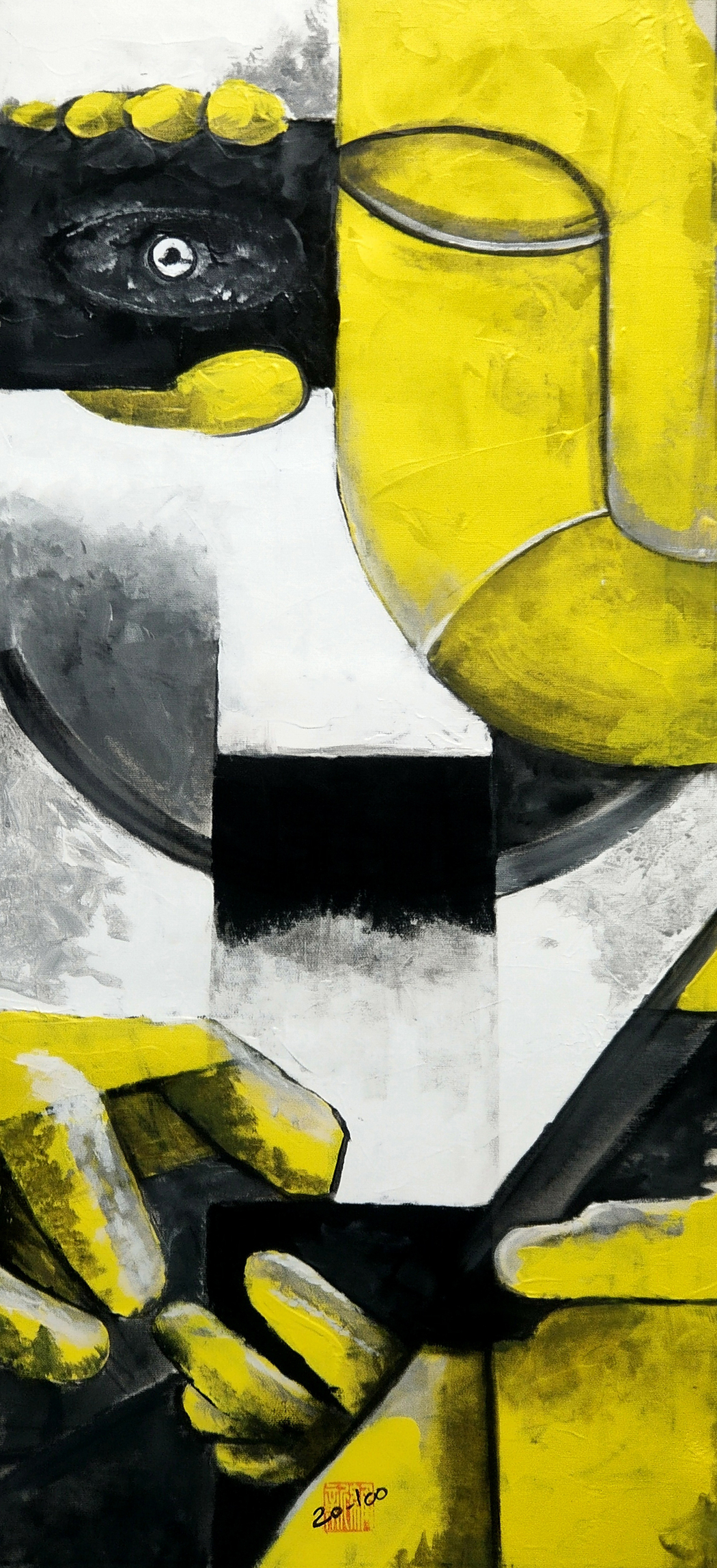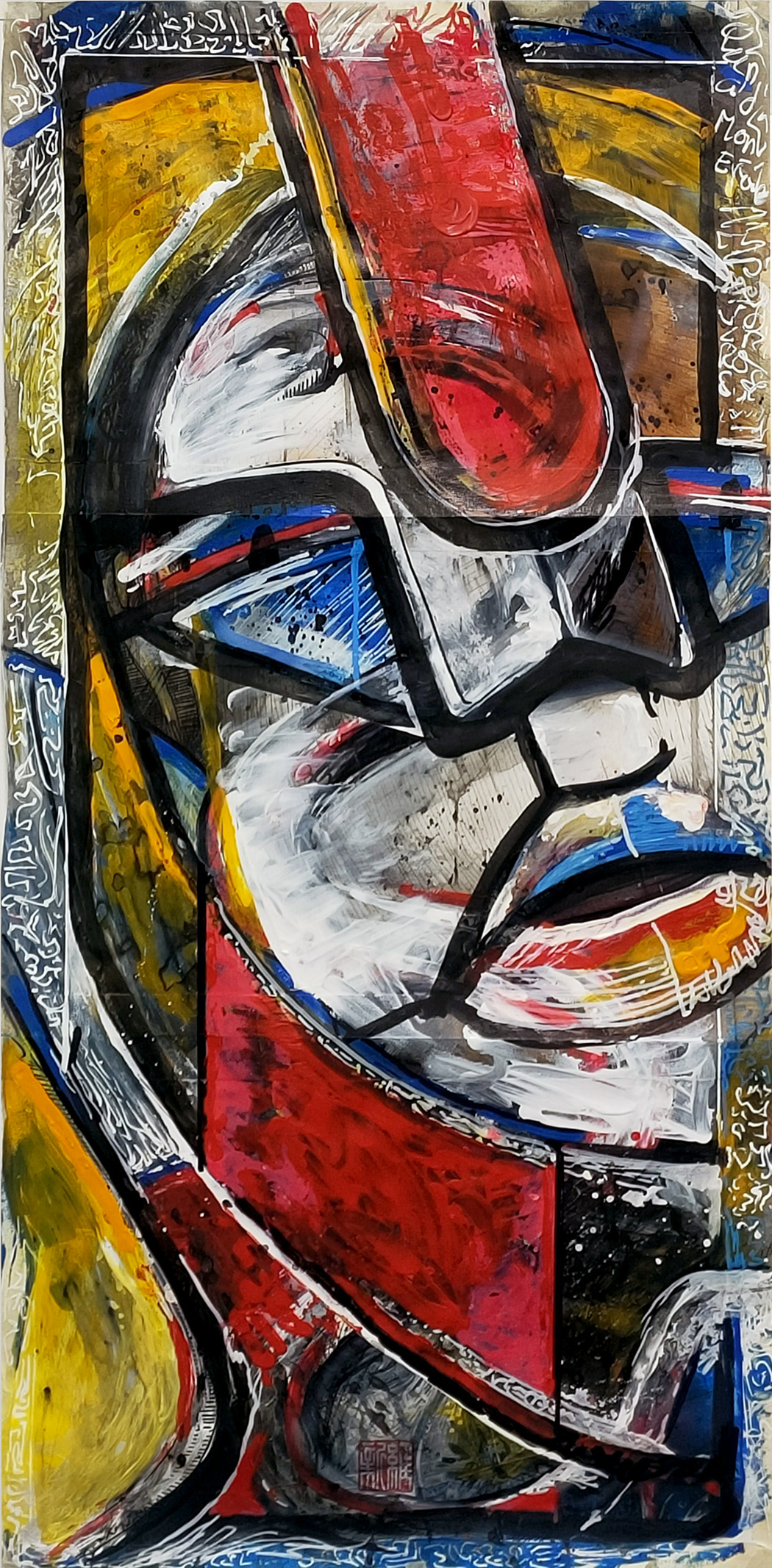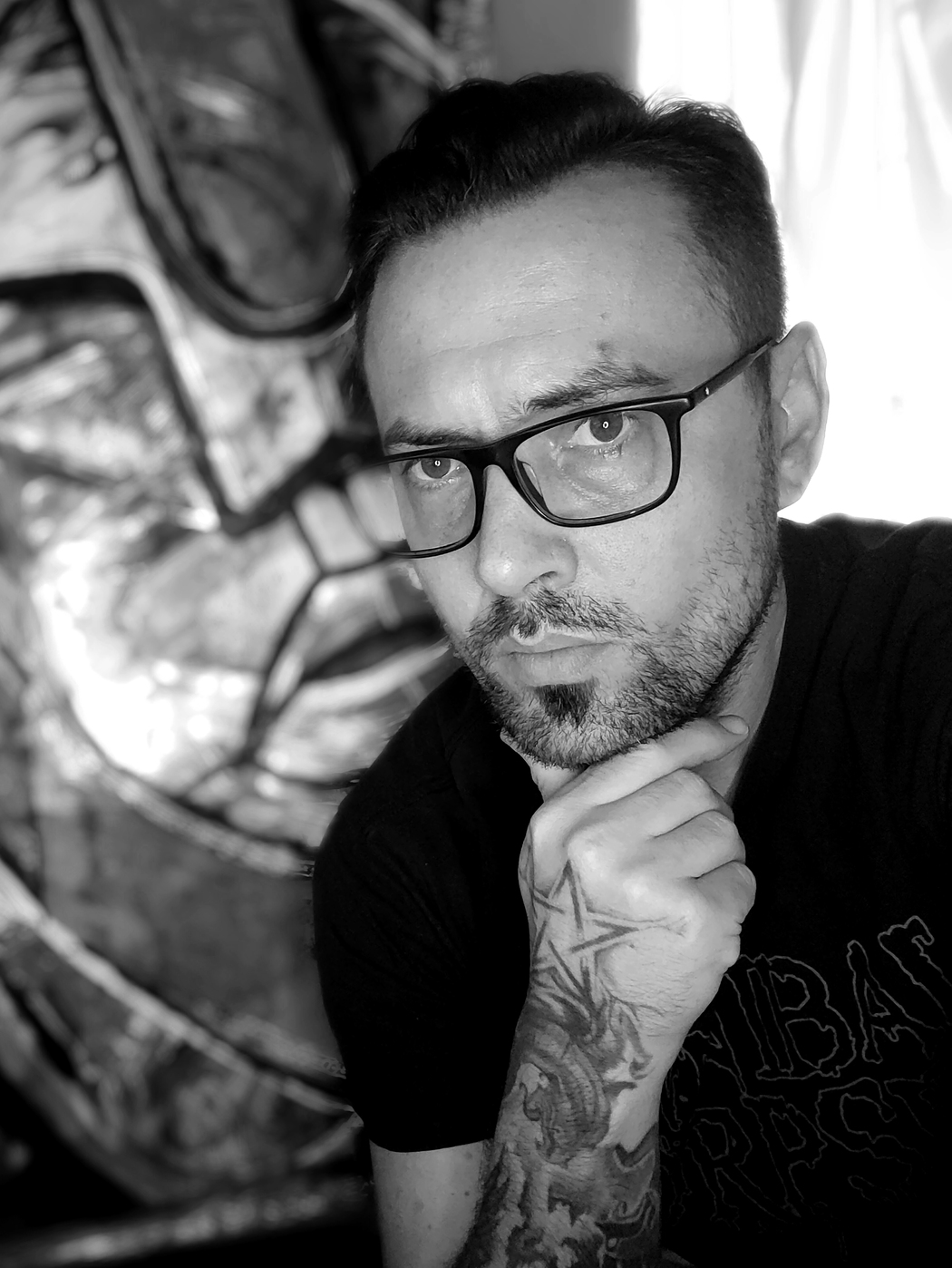Scarset Vincent Thierry Noel
Your early training involved classical techniques and mentors. How did this foundation influence the evolution of your current abstract and conceptual style?
I studied fine art from the age of 5 to 17 mentored by two very inspiring figures in the associative art world of my home town (suburbs of Paris, France), and with their support, at around that age (12~13) I started working on my own personal expression/work. After High School where I studied mechanical engineering, I entered the ENSAAMA Olivier de Serres Applied Art School in Paris in 1999 to pursue a Ceramic design Bachelor degree, while apprenticing with Serbian sculptor Dragoljub Milosevic. The crossroads of fine art, industrial design and those important mentors, pushed me to develop a practice I named “Dé-composition”, where I started (around 15-16 years old) zooming in, partitioning, extruding elements, reducing my palette, and simplifying my work in order to extract the essence of each particular painting I was working on. This method took various abstract forms in time, including physical and digital works. Over the years my work evolved from more figurative to abstract, from knife and oil painting to industrial paints and solvents, then digital and now back to a mix media with parts of each of those building blocks.
The project title “Commu-négation” is a powerful play on words. What inspired you to coin this term, and how does it reflect the themes in your work?
My current project “Commu-négation”, is part of a growing collection of works including: writing, digital art, and painting, centered around my current societal malaise living in a very crowded bustling yet anonymous world, where year after year life is becoming more and more about communication without human interaction. Where all I see are heads down scrolling, watching and messaging while no one is talking to each other. The introduction of that digital lifestyle in my experience has negated communication little by little to the point where we constantly see entire families and groups of friends and coworkers out and about together, completely alone on their individual devices, from children, to teenagers, to adults. For me, being extremely unwell and uncomfortable generally in society and quite unskilled in interpersonal relationships, it has translated to a more isolated lifestyle year after year. The current work is a direct expression and reflection of that sentiment, trying to build it into a new identity, as if to create its roots and make sense of it.
 維新 | Commu-négation | 2025
維新 | Commu-négation | 2025
Many of your figures appear faceless, voiceless, and plugged in. Are these representations a critique, a warning, or an invitation to reflect?
The figures in those works are with eyes closed, hollow ears, sometimes hollowed heads, faces angled down at devices. Mouth closed or screaming quietly. It is surely a critique, although not a warning, but an attempt to characterise modern individualism into what I call our “new standards of tribalism”. I paint those figures as if they were totems depicting our new values. In a sense, I also want to make them my own as if to reconnect with them. I think this new hedonistic epoch we are building together, seemingly a continuum of the rococo era, needs to be captured and reflected on. The ambition and maybe foolishly, is to present that epoch in a display that heads would look up to instead of down at, and together communicate around it.
Your artist statement mentions “tribal identities” and “internity.” Could you elaborate on these concepts and how they emerge visually in your paintings?
I have described in one of the texts that accompanies the work : “With cynicism and love at heart, let’s explore with idle eyes, our new tribal identities. Let’s take a look at our legacy as we continue to “commu-négate” and selfishly race toward “internity”. I coined the term “Internity” to express the current longing for constant approval in the attempt of displaying one-self (one-imagined-self) with the hope of being seen and remembered in this new digital reality forever. Our eternity shall be digital, on the internet and we crave the sense of belonging and shared cultural, historical, and social characteristics within this new tribal group. Where tribal communities were deeply rooted to a land, customs and communal role, we have built this new digital land, communities / tribes and customs online. In the work, it can take the form of characters posing for selfies, holding onto their device, or in other instances like in the work “Commu-négation”, where some sort of post-human figures with glass helmets are looking into a picture of the world from outside the frame. I try to tie it all with a common visual language of shapes and colors as if it is the offspring of that culture.
 維新 | Look Up | 2025
維新 | Look Up | 2025
You blend fine art techniques with modern commentary on technology and society. How do you balance aesthetic expression with critical messaging?
When I start each individual work, I don’t have any idea what it is going to be. Everything is done in the mindset of automatic writing and or improvisation. I will categorize and classify what emerges out of it after the fact. The commentary or message that arises from it seems to be the result of that personal reality I express, which is current, relatable and a very common illness, but it is not a conscious decision at the work’s inception. It is almost like a byproduct. Although I decided on a nomenclature of primary colors, acrylics, as well as over simplistic forms, the mix of aesthetic and critical messaging isn’t preplanned.
Do you consider your works more personal catharsis or social commentary? Or is it a blend of both?
It ends up being both, but it’s personal first and foremost. My overall work concept I call “Dé-composition” is my way of deciphering my own torments and anguish, and trying to make sense of it by taking things apart and zooming in or juxtaposing them. While doing so artistically, it is a “Dé-composition” of my life at the time of each work. As a result, the techniques, and aesthetics become a reflection of that current life experience, in which extreme changes in society and technology are happening, overhauling almost all behaviors and deeply affecting me. I know it affects many others just as much, but the result of the work could just as well be seens as a beautification of that modern lifestyle. In the end, once the work is done, I don’t want to have an imposing message, I want the work to be seen from as many angles as there are viewers.
 維新 | My Sleeping Beauty | 2025
維新 | My Sleeping Beauty | 2025
What materials or mediums do you use in the “Commu-négation” series, and how do they enhance the message you aim to convey?
In the project, the work covers writing, sketches, digital photography and paintings. All tied together around a storyline. The paintings have three categories: -Primary tribal depictions, which are only using primary colors, mainly painted with knives on canvas, geometrical and basic. -Expressive abstracts, on canvas and paper, where I use mixed mediums, with acrylic, inks, markers, with a larger palette, where more figures and wider depiction styles appear. -Portraits, that I call “Classically Grotesque”, that are figurative acrylics on paper only. My ambition once the collection is finished is to have an ensemble of works that tells the story of our “Commu-négation” and take the viewers on a disturbing voyage that mirrors our communication landscape and how we see ourselves in it and through it.


Leave a Reply